|
Search, browse, and study this dictionary to learn more about the early American, Christian language. 
 1828.mshaffer.com › Word [tail]
1828.mshaffer.com › Word [tail]
TAIL, n. 1. The part of an animal which terminates its body behind. In many quadrupeds, the tail is a shoot or projection covered with hair. In fowls, the tail consists of feathers, or is covered with them, which serve to assist in the direction of their flight. In fishes the tail is formed usually by a gradual sloping of the body, ending in a fin. The tail of a fish may assist the animal in steering, but its principal use is to propel the fish forward. It is the instrument of swimming.2. The lower part,noting inferiority. The Lord will make thee the head, and not the tail. Deut.28.3. Any thing hanging long; a catkin.4. The hinder part of any thing.5. In anatomy, that tendon of a muscle which is fixed to the movable part.6. In botany, the tail of a seed, is a downy or feathery appendage to certain seeds, formed of the permanent elongated style.7. Horse's tail, among the Tartars and Chinese, is an ensign or flag; among the Turks, a standard borne before the grand visier, bashaws and the sangiacs. For this purpose, it is fitted to a half-pike with a gold button, and is called toug. There are bashaws of one, two and three tails.8. In heraldry, the tail of a hart.9. In music, the part of a note running upwards or downwards. 10. The extremity or last end; as the tail of a storm. Tail of a comet, a luminous train which extends from the nucleus in a direction opposite to the sun. To turn tail, is to run away; to flee. Tail of a lock, on a canal, the lower end, or entrance into the lower pond. Tail-piece, of a violin, is a piece of ebony attached to the end of the instrument, to which the strings are fastened. TAIL, n. In law, an estate in tail is a limited fee; an estate limited to certain heirs, and from which the other heirs are precluded. Estates tail are general or special; general, where lands and tenements are given to one, and to the heirs of his body begotten; special, where the gift is restrained to certain heirs of the donee;s body, as to his heirs by a particular woman names. See Entail.] TAIL, v.t. To pull by the tail.
|
Evolution (or devolution) of this word [tail]
| 1828 Webster | 1844 Webster | 1913 Webster |
|---|
TAIL, n. 1. The part of an animal which terminates its body behind. In many quadrupeds, the tail is a shoot or projection covered with hair. In fowls, the tail consists of feathers, or is covered with them, which serve to assist in the direction of their flight. In fishes the tail is formed usually by a gradual sloping of the body, ending in a fin. The tail of a fish may assist the animal in steering, but its principal use is to propel the fish forward. It is the instrument of swimming.2. The lower part,noting inferiority. The Lord will make thee the head, and not the tail. Deut.28.3. Any thing hanging long; a catkin.4. The hinder part of any thing.5. In anatomy, that tendon of a muscle which is fixed to the movable part.6. In botany, the tail of a seed, is a downy or feathery appendage to certain seeds, formed of the permanent elongated style.7. Horse's tail, among the Tartars and Chinese, is an ensign or flag; among the Turks, a standard borne before the grand visier, bashaws and the sangiacs. For this purpose, it is fitted to a half-pike with a gold button, and is called toug. There are bashaws of one, two and three tails.8. In heraldry, the tail of a hart.9. In music, the part of a note running upwards or downwards. 10. The extremity or last end; as the tail of a storm. Tail of a comet, a luminous train which extends from the nucleus in a direction opposite to the sun. To turn tail, is to run away; to flee. Tail of a lock, on a canal, the lower end, or entrance into the lower pond. Tail-piece, of a violin, is a piece of ebony attached to the end of the instrument, to which the strings are fastened. TAIL, n. In law, an estate in tail is a limited fee; an estate limited to certain heirs, and from which the other heirs are precluded. Estates tail are general or special; general, where lands and tenements are given to one, and to the heirs of his body begotten; special, where the gift is restrained to certain heirs of the donee;s body, as to his heirs by a particular woman names. See Entail.] TAIL, v.t. To pull by the tail. |
TAIL, n.1 [Sax. tægl; Ice. tagl; dim. of tag, a shoot, or from Goth. taga, hair.]- The part of an animal which terminates its body behind. In many quadrupeds, the tail is a shoot or projection covered with hair. In fowls, the tail consists of feathers, or is covered with them, which serve to assist in the direction of their flight. In fishes the tail is formed usually by a gradual sloping of the body, ending in a fin. The tail of a fish may assist the animal in steering, but its principal use is to propel the fish forward. It is the instrument of swimming.
- The lower part, noting inferiority.
The Lord will make thee the head, and not the tail. Deut. xxviii.
- Any thing hanging long; a catkin. Harvey.
- The hinder part of any thing. Butler.
- In anatomy, that tendon of a muscle which is fixed to the movable part. Cyc.
- In botany, the tail of a seed, is a downy or feathery appendage to certain seeds, formed of the permanent elongated style. Cyc.
- Horse's tail, among the Tartars and Chinese, is an ensign or flag; among the Turks, a standard borne before the grand visier, bashaws and the sangiacs. For this purpose, it is fitted to a half-pike with a gold button, and is called toug. There are bashaws of one, two and three tails. Cyc.
- In heraldry, the tail of a hart.
- In music, the part of a note running upward or downward.
- The extremity or last end; as, the tail of a storm.
Tail of a comet, a luminous train which extends from the nucleus in a direction opposite to the sun.
To turn tail, is to run away; to flee.
Tail of a lock, on a canal, the lower end, or entrance into the lower pond.
TAIL, n.2 [Fr. tailler, Sp. tallar, It. tagliare, Port. talhar, Ir. tallam, to cut off; W. toli, to curtail, to separate, to deal out, from tawl, a sending or throwing, a cast or throw, a separation, diminution, interruption. This is from the same root as deal. Class Dl, No. 15. See Deal.]In law, an estate in tail is a limited fee; an estate limited to certain heirs, and from which the other heirs are precluded. Estates tail are general or special; general, where lands and tenements are given to one, and to the heirs of his body begotten; special, where the gift is restrained to certain heirs of the donee's body, as to his heirs by a particular woman named. [See Entail.] Blackstone.
TAIL, v.t.To pull by the tail. Hudibras. |
Tail
- Limitation;
abridgment.
- Limited; abridged;
reduced; curtailed; as, estate tail.
- The terminal, and usually flexible, posterior
appendage of an animal.
- To follow
or hang to, like a tail; to be attached closely to, as that which can not
be evaded.
- To hold by the end; -- said of a timber when it rests upon a wall or
other support; -- with in or into.
- In some forms of rope-laying machine, pieces
of rope attached to the iron bar passing through the grooven wooden
top containing the strands, for wrapping around the rope to be
laid.
- In flying machines, a plane or group of planes used at the rear
to confer stability.
- Any long, flexible terminal appendage; whatever
resembles, in shape or position, the tail of an animal, as a
catkin.
- To pull or draw by the tail.
- To swing with the stern in a
certain direction; -- said of a vessel at anchor; as, this vessel
tails down stream.
- A tailed coat; a tail
coat.
- Hence, the back, last, lower, or inferior part
of anything, -- as opposed to the head, or the superior
part.
- A train or company of attendants; a
retinue.
- The side of a coin opposite to that which bears
the head, effigy, or date; the reverse; -- rarely used except in the
expression "heads or tails," employed when a coin is thrown up for the
purpose of deciding some point by its fall.
- The distal tendon of a
muscle.
- A downy or feathery appendage to
certain achenes. It is formed of the permanent elongated style.
- A portion of
an incision, at its beginning or end, which does not go through the whole
thickness of the skin, and is more painful than a complete incision; --
called also tailing.
|
| 1828 Webster | 1844 Webster | 1913 Webster |
|---|
Thank you for visiting!
- Our goal is to try and improve the quality of the digital form of this dictionary being historically true and accurate to the first American dictionary. Read more ...
- Below you will find three sketches from a talented artist and friend depicting Noah Webster at work. Please tell us what you think.
Divine Study
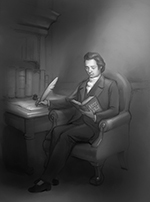 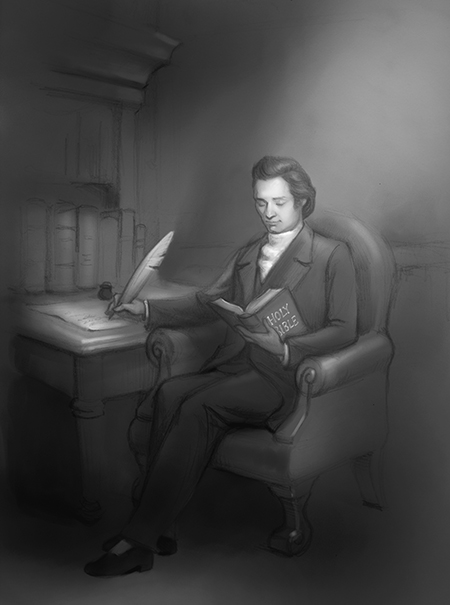
Divine Study
|
Window of Reflection
 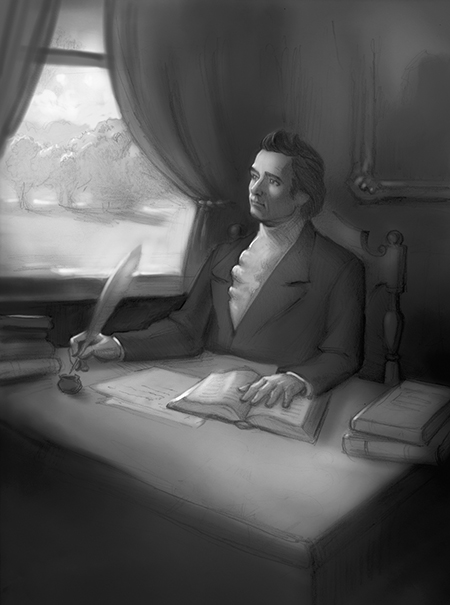
Window of Reflection
|
Enlightening Grace
 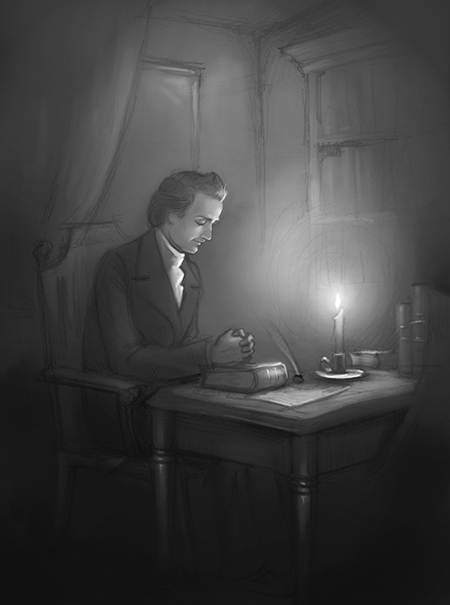
Enlightening Grace
|
159
|
932 |
111
|
1018 |
186
|
1046 |

Tail TAIL, noun 1. The part of an animal which terminates its body behind. In many quadrupeds, the tail is a shoot or projection covered with hair. In fowls, the tail consists of feathers, or is covered with them, which serve to assist in the direction of their flight. In fishes the tail is formed usually by a gradual sloping of the body, ending in a fin. The tail of a fish may assist the animal in steering, but its principal use is to propel the fish forward. It is the instrument of swimming. 2. The lower part, noting inferiority. The Lord will make thee the head, and not the tail Deuteronomy 28:13. 3. Any thing hanging long; a catkin. 4. The hinder part of any thing. 5. In anatomy, that tendon of a muscle which is fixed to the movable part. 6. In botany, the tail of a seed, is a downy or feathery appendage to certain seeds, formed of the permanent elongated style. 7. Horse's tail among the Tartars and Chinese, is an ensign or flag; among the Turks, a standard borne before the grand visier, bashaws and the sangiacs. For this purpose, it is fitted to a half-pike with a gold button, and is called toug. There are bashaws of one, two and three tails. 8. In heraldry, the tail of a hart. 9. In music, the part of a note running upwards or downwards. 10. The extremity or last end; as the tail of a storm. TAIL of a comet, a luminous train which extends from the nucleus in a direction opposite to the sun. To turn tail is to run away; to flee. TAIL of a lock, on a canal, the lower end, or entrance into the lower pond. TAIL-piece, of a violin, is a piece of ebony attached to the end of the instrument, to which the strings are fastened. TAIL, noun In law, an estate in tail is a limited fee; an estate limited to certain heirs, and from which the other heirs are precluded. Estates tail are general or special; general, where lands and tenements are given to one, and to the heirs of his body begotten; special, where the gift is restrained to certain heirs of the donee; s body, as to his heirs by a particular woman names. See Entail.] TAIL, verb transitive To pull by the tail |

|
| Hard-cover Edition |
367 |
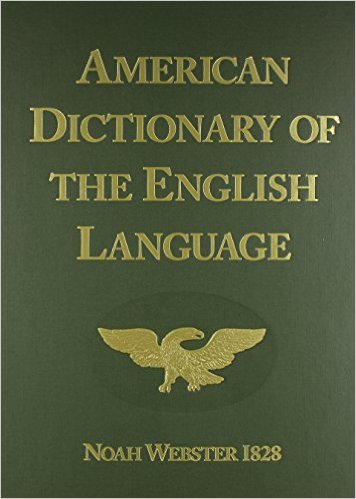 |
540 |
|
| Compact Edition |
352 |
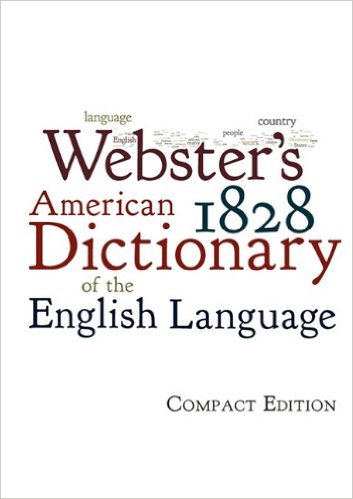 |
242 |
|
| CD-ROM |
303 |
 |
192 |
|
* As a note, I have purchased each of these products. In fact, as we have been developing the Project:: 1828 Reprint, I have purchased several of the bulky hard-cover dictionaries. My opinion is that the 2000-page hard-cover edition is the only good viable solution at this time. The compact edition was a bit disappointing and the CD-ROM as well. |
| [ + ] |
| Add Search To Your Site |
|
|
|
 1828.mshaffer.com › Word [tail]
1828.mshaffer.com › Word [tail]
